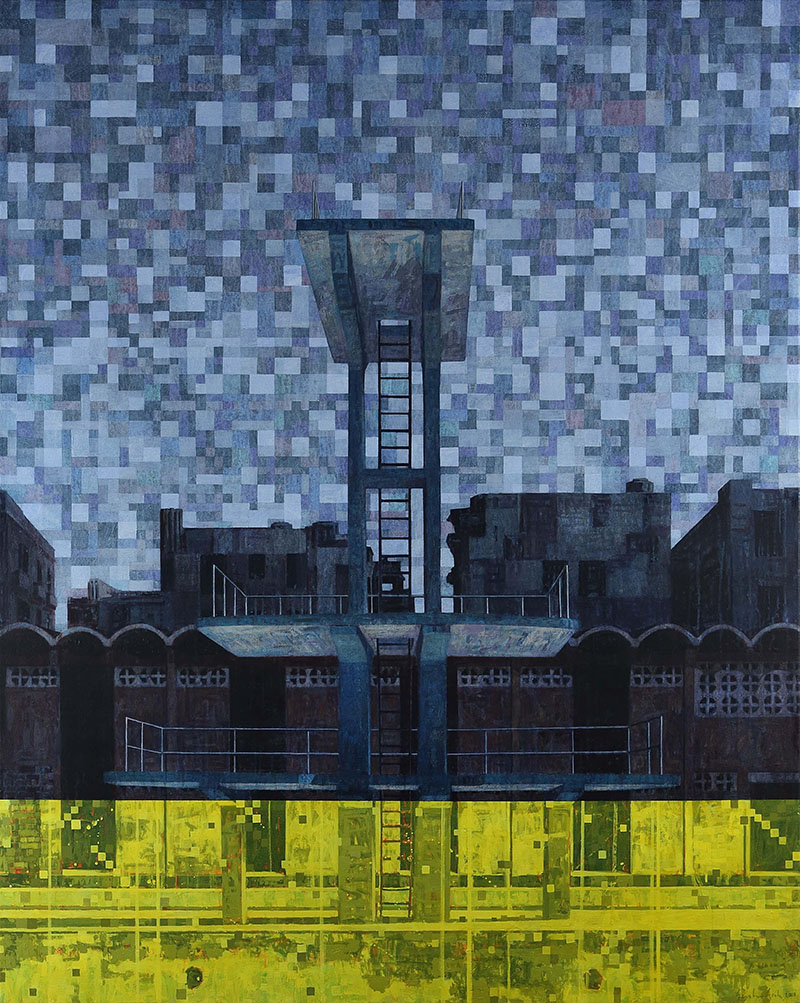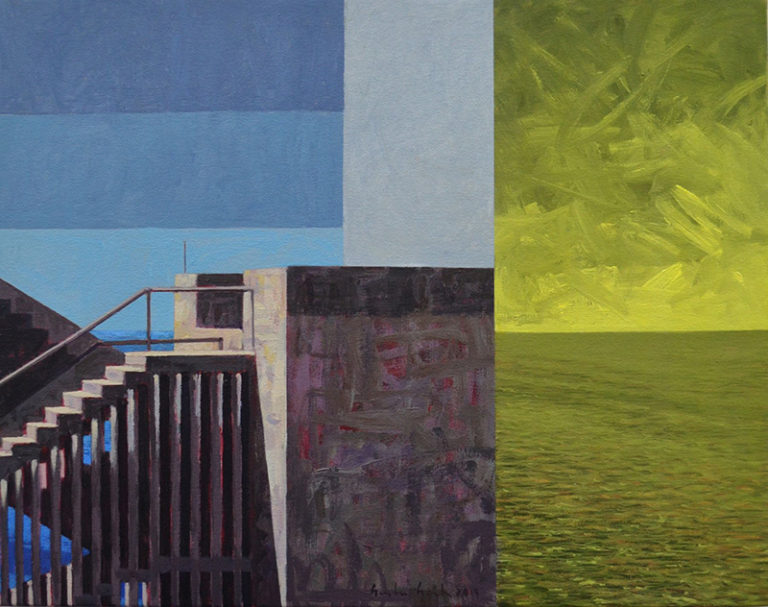Gustavo Acosta is a Cuban-born, Miami-based painter whose skillful renderings of the urban landscape merge various techniques of paint application. In his latest works, realistic images of building fragments and cityscapes are combined with monochromatic grids in muted colors that reference digitized pixels. In an exhibition called “Transpositions,” the paintings layer different scenarios to create new meaning. Through transposition, Acosta conflates unrelated places, allowing them to resonate through formal and conceptual associations.
In the large painting Overexposed, (all works 2019), Acosta juxtaposes a historical photograph of men on scaffolding examining the construction of columns. This loosely painted pink-toned centerpiece is flanked by two gray-green street scenes in which images of abstracted buildings (some with columns) are partially obscured by a flutter of green squares.
In the lower half of The Transposed Tales II, a man wearing a backpack is seen from the behind, placing a camera on a tripod in an empty field. The image has been reduced to a grid of pink squares, or pixels, separated by light pencil lines. In contrast to this pixelated scene, Acosta extends the upper portion of the painting into a dark-toned representation of the scene about to be photographed—bombed out and abandoned buildings surrounded by green trees. Acosta implies a before/after narrative, yet depicts these different moments in time simultaneously.
The idea of simultaneity is further explored in Traveling North, where an exterior stairway leads up and down to nowhere (reminiscent of Piranesi’s Imaginary Prisons). The realistically rendered structure is coupled with an entanglement of construction materials diffused in the geometry of pink pixels.
Acosta also combines different instances of time to suggest the city is in flux, yet stoically surviving during this ongoing destruction and renewal. Curiously, his environments are devoid of people and uninhabited, yet when humans are included, they are culled from appropriated sources, often from another era. He even borrows from Alfred Hitchcock: hidden within the pixels of The Transposed Tales I is an image from Vertigo in which Jimmy Stewart carries Kim Novak in his arms near the Golden Gate Bridge. Acosta transposes this scenario into brutalist bunker architecture, presenting it out of context and obscured by a grid of pixels.
Each of the 12 paintings in Transpositions features the layering of disparate sections to create a narrative. Acosta explores the relationship between past and present, representation and abstraction, analog and digital, using different styles of painting within the compositions. The works have a geometric structure as each urban background image has a rectangular grid imposed on it. These grids or pixels ultimately serve as glitches, taking viewers away from and outside the focal point, causing a double-take—as if a flash went off, illuminating the landscape in an uncanny and disquieting fashion. Acosta’s paintings are ambiguous, curious and captivating. They have a commanding presence and function as complex puzzles that offer clues but resist complete deciphering.



